Masterpiece Story: Ground Swell by Edward Hopper
Edward Hopper created his peaceful seascape masterpiece Ground Swell with hinted implications of social disengagement, emotional loneliness, and...
James W Singer 21 April 2024
23 August 2022 min Read
Originally titled A Portrait of a Young Gentleman, this iconic painting by Thomas Gainsborough was first presented at the Royal Academy exhibition of 1770. Gainsborough’s work transfixed admirers and was highly acclaimed for its incredible play on color. It became immensely popular and, by 1798, it was known by its nickname, The Blue Boy. The popularization of this painting has continued through pop culture, including a video game!
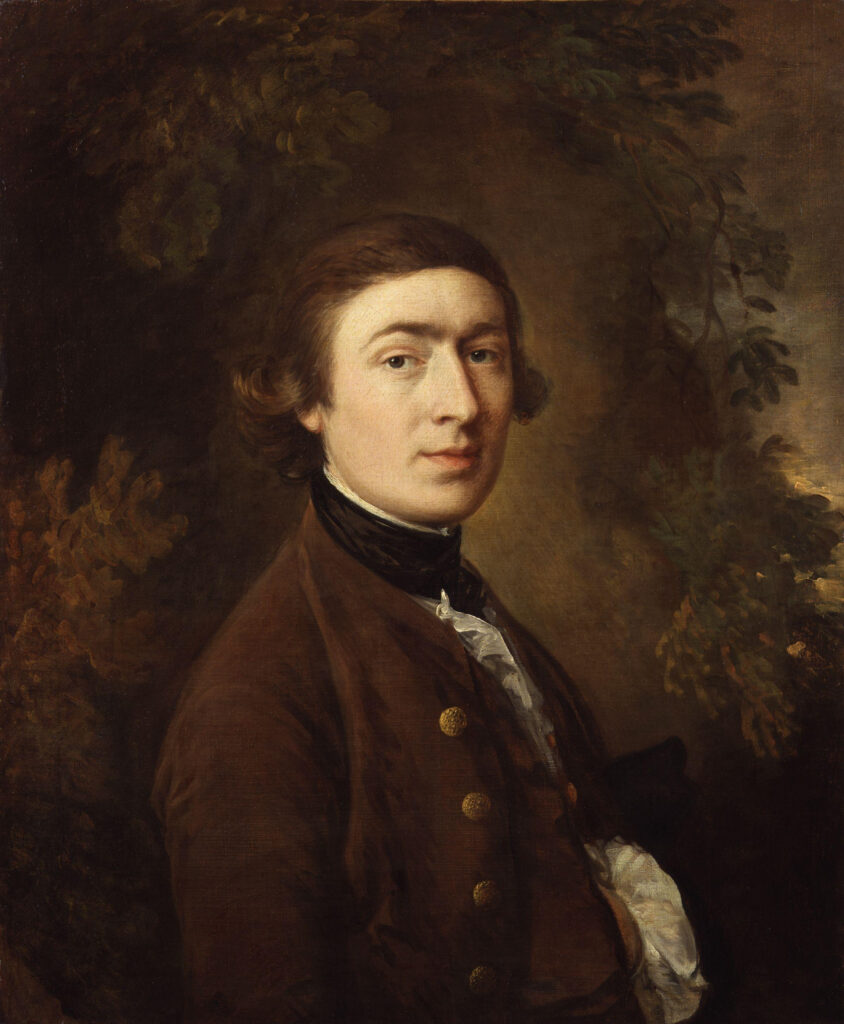
Thomas Gainsborough, Self-Portrait, ca. 1758-1759, National Portrait Gallery, London, UK. Wikimedia Commons (Public Domain).
Thomas Gainsborough was a British landscape painter active in 18th century England. As with many talented artists, Gainsborough showed an early affinity for painting and established his portfolio in the Rococo style. He developed a unique aesthetic that presented a departure from the academic tradition and became a source of inspiration for the artists of Romanticism. Although Gainsborough was greatly renowned for his portraiture, he considered it a means of his livelihood. Landscapes were truly his passion.
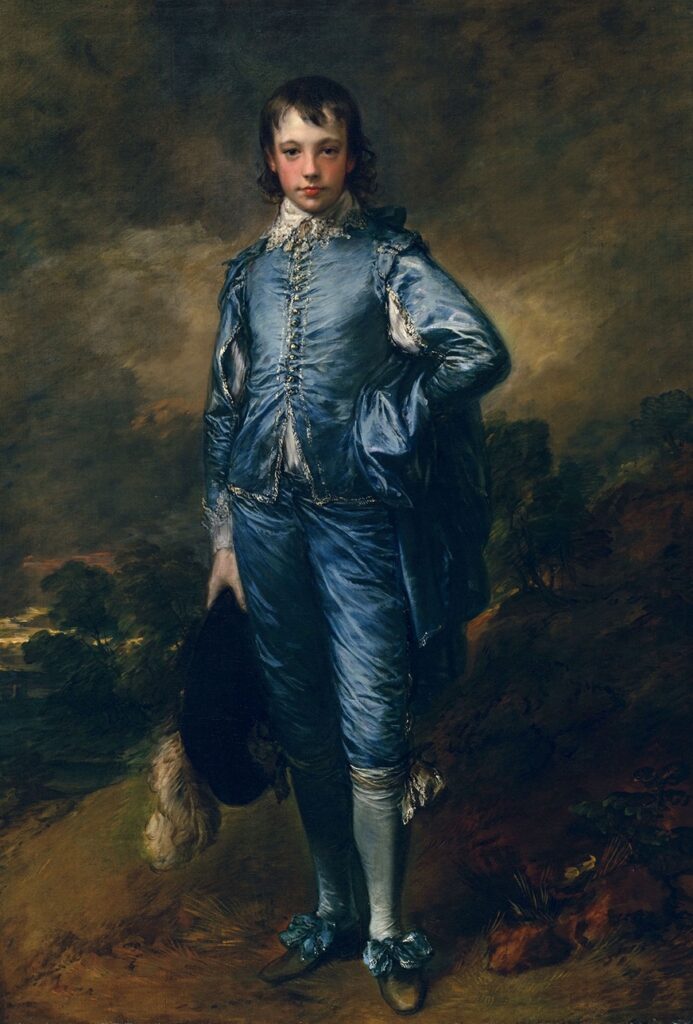
Thomas Gainsborough, The Blue Boy, ca. 1770, The Huntington Library, San Marino, CA, USA.
The Blue Boy is a large painting about 48 inches (120 cm) wide and 70 inches (180 cm) tall. It is believed that this painting wasn’t commissioned, but was created expressly for the Royal Academy exhibition of 1770.
Standing in the center is an ostentatiously dressed young boy with dark wavy hair and dark eyes. In his right hand is a black hat and his left supports a cloak. His cheeks and lips are flushed pink. His left foot is advanced to emphasize his captivating clothing. The boy is set within a backdrop of typically Gainsborough-esque stormy skies and there is a slight illumination over the low horizon to the left.
It has long been speculated that the subject of this painting was its early owner, Jonathan Buttall, however, this has never been conclusively established. There have also been speculations that suggest the sitter may have been Gainsborough’s nephew, Gainsborough Dupont.
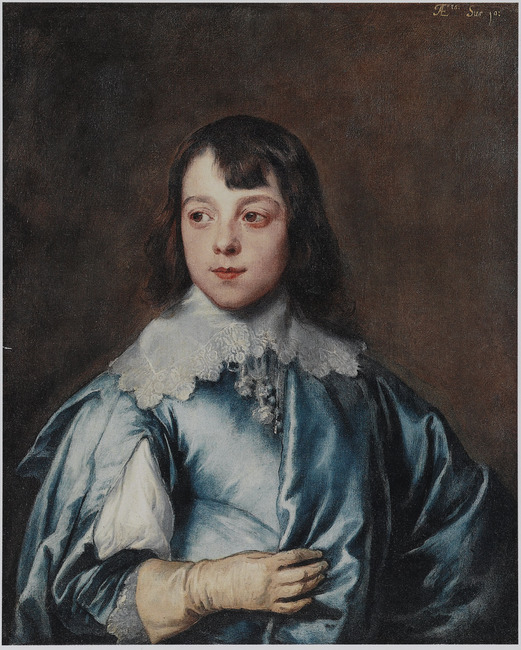
Anthony van Dyck, Portrait of Charles Stanley, Lord Strange, 8th Earl of Derby, ca. 1638, private collection. Wikimedia Commons (public domain).
This painting is a historical study in costume with the subject observed in fanciful knee-breeches and a slashed doublet with a lace collar. The tunic, breeches, and cloak are of a brilliant blue satin rendered in a spectrum of colors including ultramarine, smalt, Prussian blue, and azurite. A white shirt is visible underneath.
The blue is accented by a silver braid, silver buttons, and garters. The shoes are accented with a silver braid as well. The clothing is inspired by the work of 17th century Flemish painter, Anthony van Dyck.
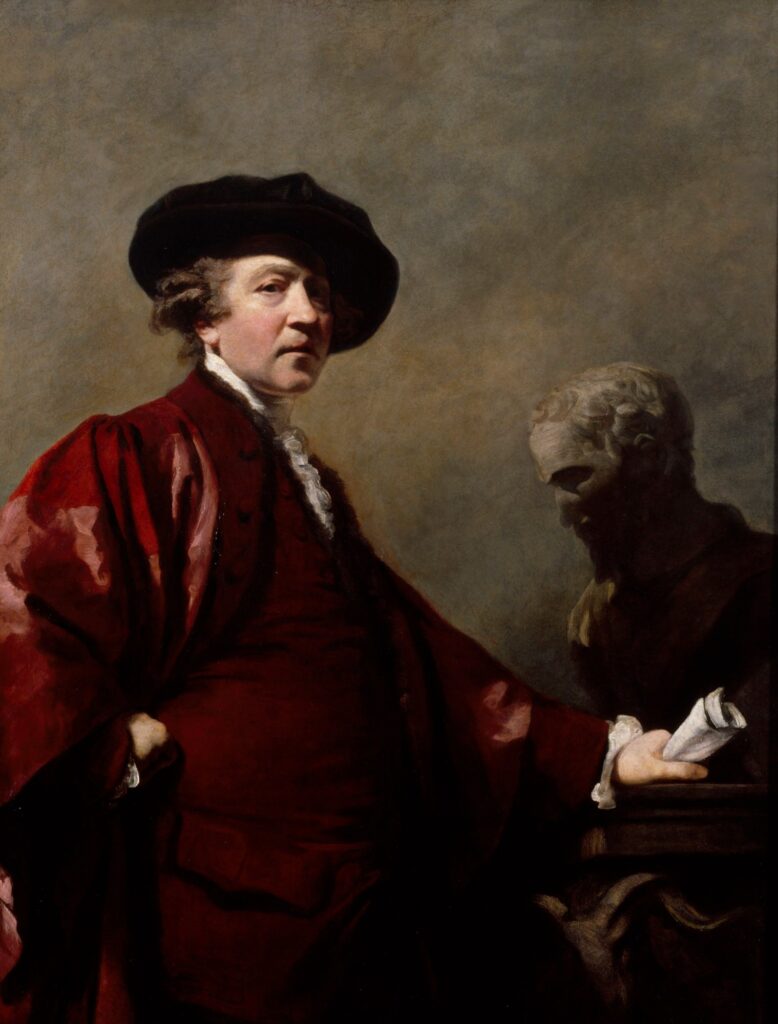
Sir Joshua Reynolds PRA, Self-portrait of Sir Joshua Reynolds, ca. 1780, Royal Academy, London, UK.
A part of the allure of this painting was a supposed controversy surrounding Gainsborough’s motive behind creating this work. It is believed that the choice of color may have been a deliberate attempt at refuting a statement made by Gainsborough’s rival Sir Joshua Reynolds. As President of the Royal Academy, Reynolds had lectured publicly on the use of warm and cool colors in his Discourse VIII that was presented in 1778.
It ought, in my opinion, to be indispensably observed that masses of light in a picture are always of a warm, mellow color such as yellow, red, or a yellowish-white. Blue, grey, or green colors should be kept almost entirely out of these masses, and be used only to support or set off these warm colors; and for this purpose, a small proportion of cold color will be sufficient.
Discourses on Painting and the Fine Arts: Delivered at the Royal Academy.
This highlighted the artists’ two opposing views. Unlike Reynolds, who was a disciplined advocate of academic styles, Gainsborough remained removed from any academic decorum. However, it is unlikely that Gainsborough’s motivation was to contradict Reynold’s discourse, as The Blue Boy came eight years after Gainsborough completed this painting. The story of a rebuke was, however, repeated erroneously and played a role in The Blue Boy’s acclaim.
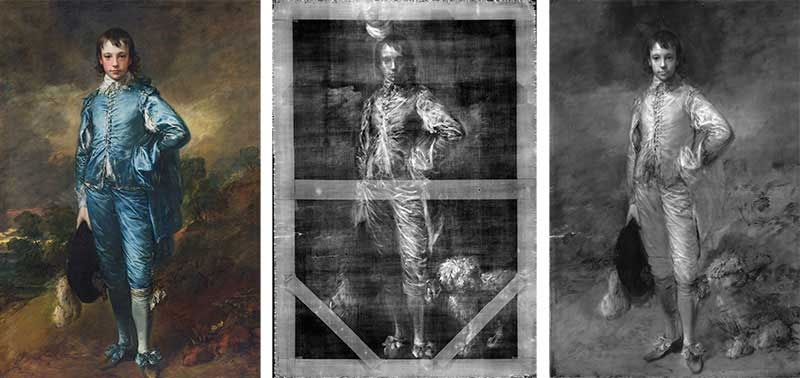
The Blue Boy in normal light photography, digital x-radiography, and infrared reflectography, The Huntington Library, Art Museum, and Botanical Gardens, San Marino, CA, USA.
X-rays have revealed that The Blue Boy was painted over an incomplete painting of an older man. Further, Gainsborough had originally painted a dog to go alongside the boy that was covered up by a pile of rocks.
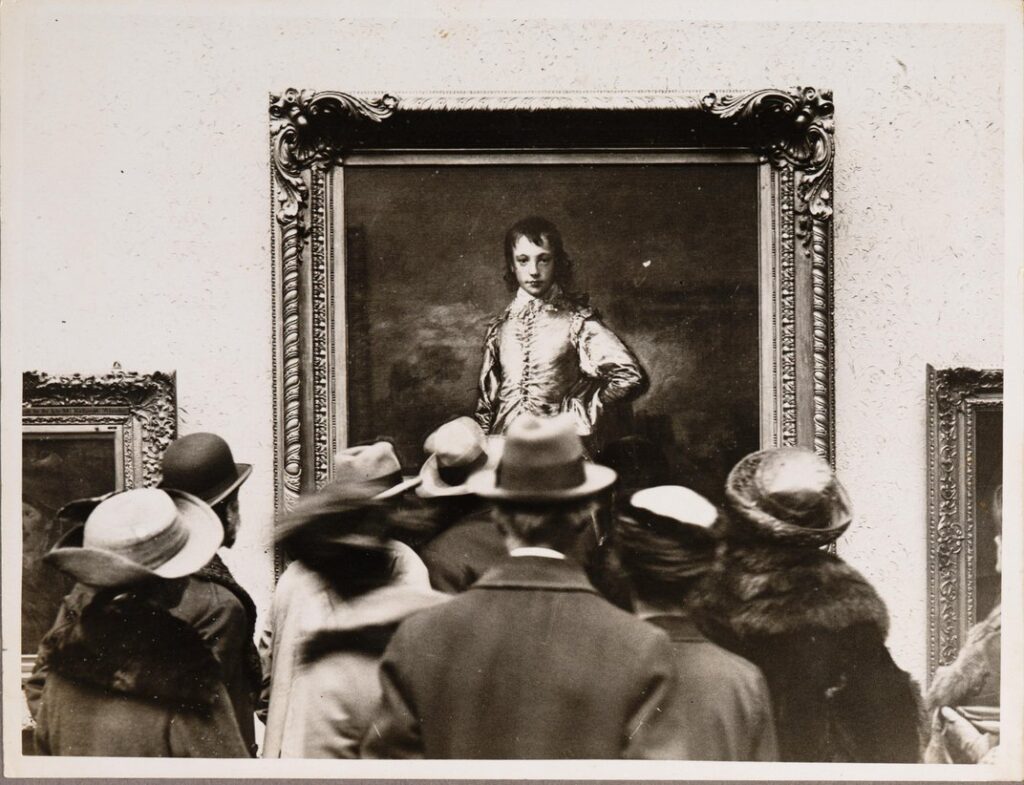
The Blue Boy on display at the National Gallery in London in 1922, The Huntington Library, Art Museum, and Botanical Gardens, San Marino, CA, USA.
The painting was in the possession of hardware merchant, Jonathan Buttall until he filed for bankruptcy in 1796. It passed through the hands of a politician, John Nesbitt, and a portrait painter, John Hoppner. In 1809, The Blue Boy entered the collection of Earl Grosvenor and remained with his descendants until 1921. The Grosvenor family played an enormous role in the popularity of The Blue Boy. They frequently exhibited it at public events and even admitted visitors to their residence in London to view the painting.
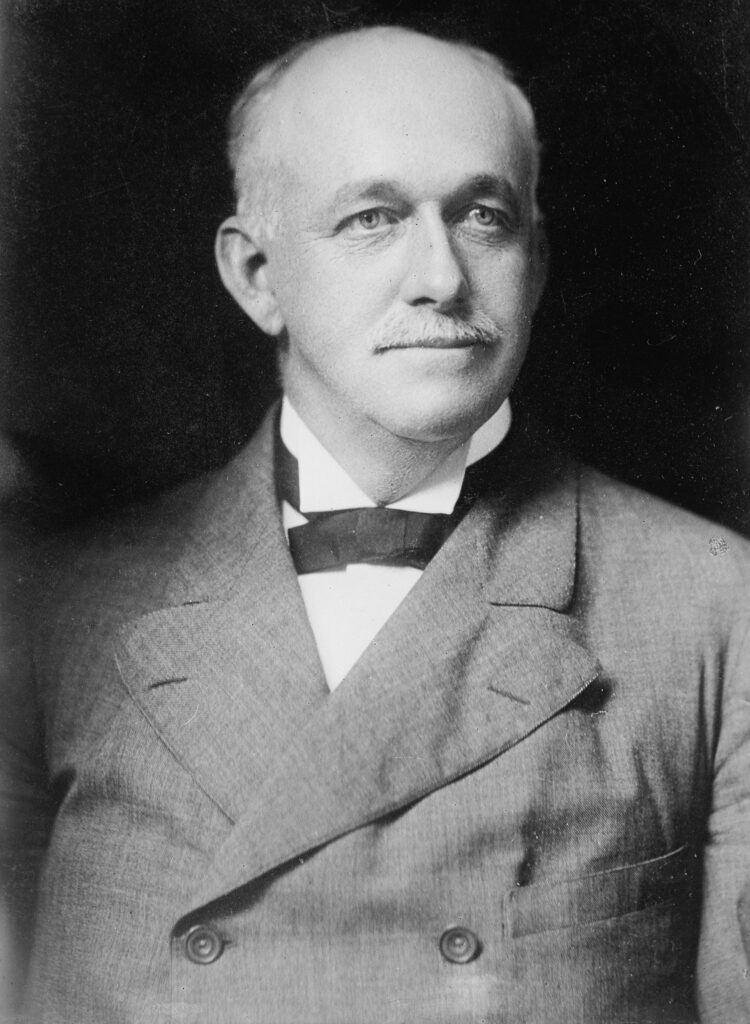
Photograph of Henry E. Huntington, United States Library of Congress’s Prints and Photographs division (public domain).
Henry Edwards Huntington was an American railroad tycoon and an avid collector of art and rare books. He purchased The Blue Boy for over $720,000, which is believed to be equivalent to about $9.3 million today. Leading up to its departure to California in 1922, there was an international publicity campaign that popularized the painting. The Blue Boy was briefly put on display at the National Gallery in London, where it was seen by about 90,000 people. The director of the National Gallery at the time, Charles Holmes, wrote his farewell to The Blue Boy with a note scribbled on its back that read, “Au Revoir, C.H.”
The painting made its way to the Huntington estate in Southern California to add to the impressive collection. It is currently on display at the Thornton Portrait Gallery at The Huntington Library, Art Museum, and Botanical Gardens in San Marino, California.
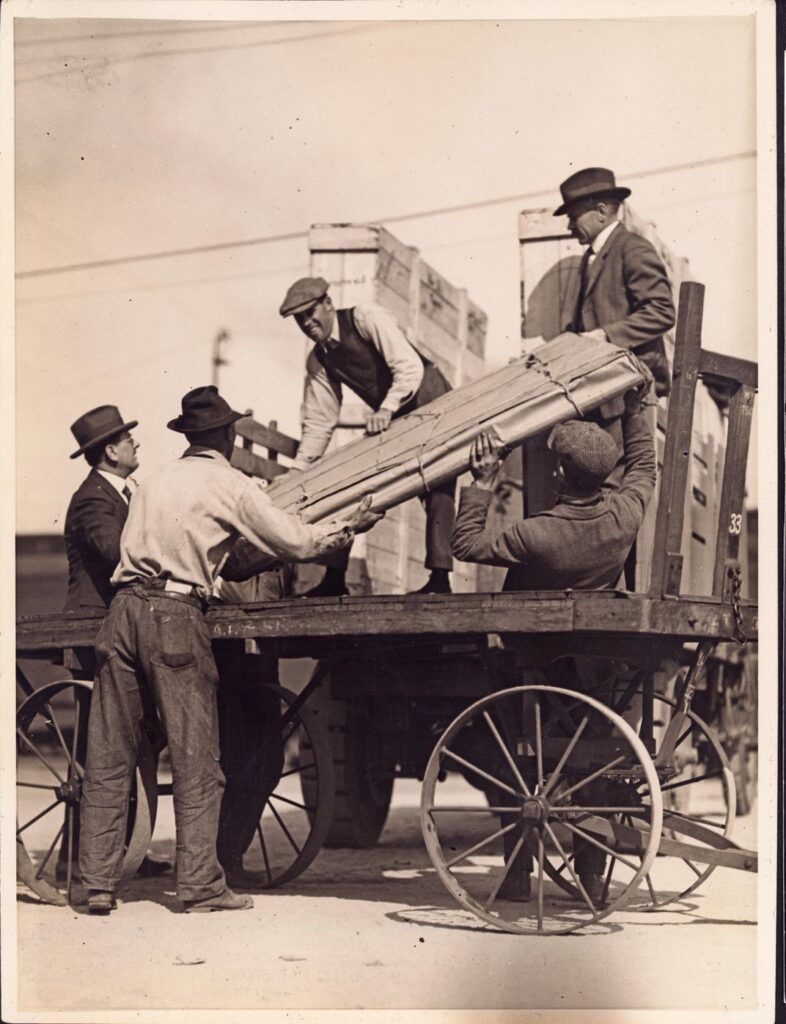
The Blue Boy is unloaded from a train in 1922. The Huntington Library, Art Museum, and Botanical Gardens, San Marino, CA, USA.
The popularity of The Blue Boy transcended onto the silver screen. It makes an appearance in The Naked Gun (1988), Batman (1989), and Joker (2019). Parodies of the blue clothing appear in Ghostbusters 2 (1989), Austin Powers: International Man of Mystery (1997), Teacher’s Pet (2004), and Cinderella III: A Twist in Time (2007). Perhaps the most famous inspiration is in recent history in Quentin Tarantino’s 2012 film Django Unchained. In this movie, the anti-hero Django wore an outfit heavily inspired by The Blue Boy on his quest for vengeance.
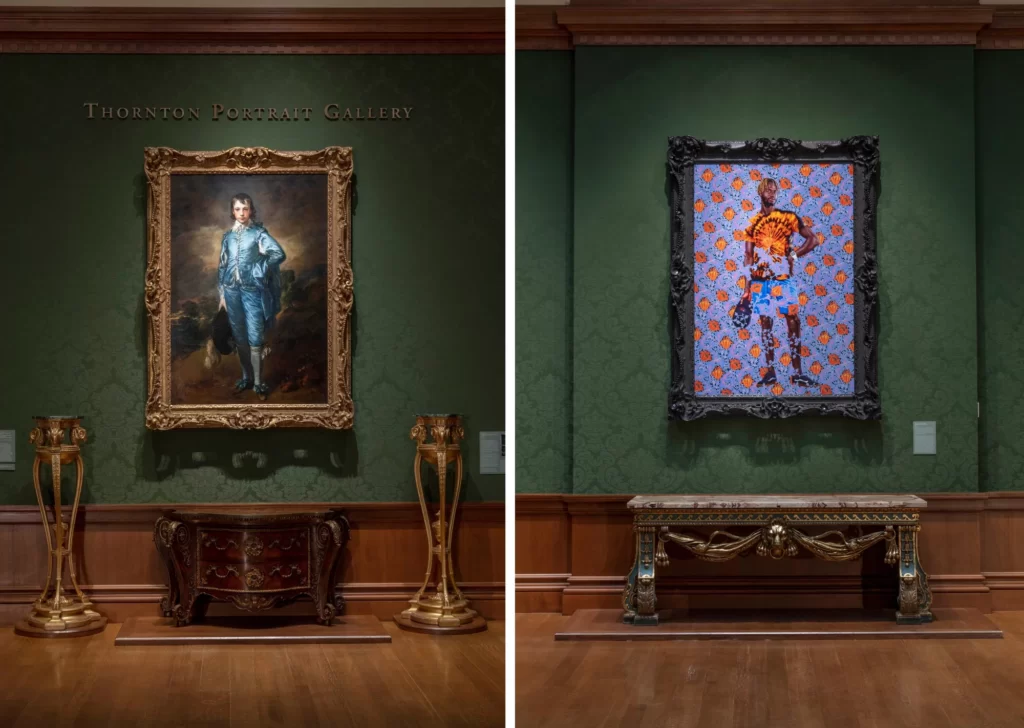
Left: Thomas Gainsborough’s The Blue Boy, ca. 1770, Right: Kehinde Wiley’s A Portrait of a Young Gentleman, 2021, installation view in the Thornton Portrait Gallery at The Huntington, San Marino, CA, USA.
DailyArt Magazine needs your support. Every contribution, however big or small, is very valuable for our future. Thanks to it, we will be able to sustain and grow the Magazine. Thank you for your help!